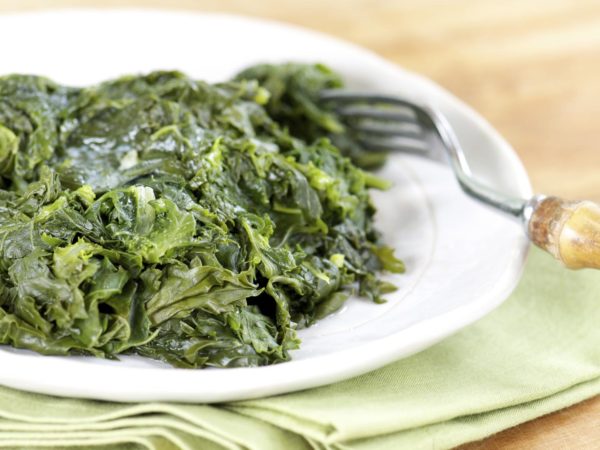Healthy Southern Cooking

Ham glazed with Coca-Cola, twice-fried chicken, cream gravy, and other fat-and-sugar-laden traditional entrees explain why the terms “healthy” and “Southern cooking” are seldom linked. But at the 2010 Nutrition & Health Conference – held in Atlanta, Ga. in May 2010, and co-sponsored by the Arizona Center for Integrative Medicine – attendees were fortunate enough to savor a different side of one of America’s favorite cuisines.
The interactive demonstration, “Feeding Your Soul: Exploring the Healthy Side of Southern Cooking,” led by chefs Scott Peacock and Wendy Kohatsu, M.D., explored the fact that despite its greasy rap, Southern grub is not inherently unhealthy. They pointed out that fresh vegetables and legumes – think black-eyed peas, tomatoes, root vegetables, and collard greens – straight from the land are the true backbone of foods from Down South, so why not indulge? By combining these familiar whole-food ingredients with healthy cooking methods, it’s easy for Southern chefs to conform to the tenets of Dr. Weil’s Anti-Inflammatory Diet Pyramid.
Sacrificing unhealthy fats, salt, and calories does not mean giving up home-cooked flavor. Perhaps the easiest and most effective way to detoxify Southern cuisine is simply to cut the deep-fat frying. Chefs Peacock and Kohatsu suggest “oven-frying” as a healthy alternative: After dipping your vegetables, meat, or meat substitutes in a 1:1 milk/egg blend (or soy milk/egg-replacer dipping mixture), coat with cornmeal or breadcrumbs and Cajun seasoning, and refrigerate for one hour to set. Spray a baking sheet and your breaded items lightly with oil, then bake at 375 degrees for 10-20 minutes, flipping halfway through when lightly browned. Alternatively, you can forgo any type of frying, and try roasting vegetables in the oven at about 350°F to caramelize the natural plant sugars. As an occasional treat or comfort food, deep-fat frying is fine; just ensure that your frying oil is fresh and kept at the proper temperature (325-375°F). Avoid unnecessarily heavy batters, and use a draining rack instead of paper towels to better sop up excess grease.
Of course, it’s not only the amount, but type, of fat that matters. Optimum health requires a balance of polyunsaturated (especially omega-3 fatty acids), monounsaturated, and saturated fats, so aim to include a variety of cooking oils and fat sources in your kitchen. Olive oil, with its recognizably fruity flavor, is a good choice for adding flavor to salads, while expeller-pressed canola oil is better when seeking a more neutral taste. Avoid refined oils (which are tasteless, stripped of proteins, nutrients, and antioxidants, and often chemically-altered into trans-fats, or contaminated), and stay below the respective smoke points of the fats that you do use (smoke points range from extra-virgin olive oil at 320°F, to butter at 350°F, to avocado oil at 520°F, so do your research!).
Healthy Southern soul food isn’t just about avoidance! In addition to reducing bad fats, amp up the good stuff! Spice blends of chili, bell pepper, celery, and onion are an essential and delicious facet of Creole cooking, and also decrease the need for salt. If you’re craving smoky flavors, try a healthy dash of good-quality Spanish smoked paprika in lieu of pork.
Finally, keep in mind that, as always, portion sizes count. Even healthful Southern cuisine can become unhealthful if eaten in excessive quantities; likewise, richer fare still has a place in the diet in moderation.
“Asian and Mediterranean cuisines are undeniably healthier than typical American fare, but many Americans are uncomfortable with food that is outside of their daily experience, and just won’t eat it,” said Dr. Weil. “I think it’s great that inspired chefs like Scott Peacock and Wendy Kohatsu are exploring and sharing healthful ways to enjoy our favorite foods.”
Want to try healthy versions of cornmeal muffins, spicy collards and fried okra? Find the healthy Southern recipes here.









